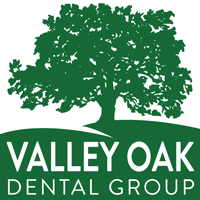Valley Oak Dental Group
Paying for dental care when you don’t have dental insurance isn’t as terrible a proposition as many people might believe. You may even find that some of the solutions out there are even better than using dental insurance. No matter your situation, you don’t have to avoid dental care because you think you can’t afford it. Here are several ways you can pay for dental care without dental insurance.
1. Look for Free or Discounted Local Services
Several options for free or nearly free dental services are out there. A few places to check include:
- Dental schools
- Public or free dental clinics
- Volunteer or donated labor dental clinics
Free doesn’t mean you will receive bad service. Even at dental schools, the students won’t go to work on you without supervision and close guidance from their supervisors.
Some of these services offer free procedures or heavily-reduced ones for people with no insurance or no income, which can mean you need to qualify or prove eligibility. Nevertheless, some of these services also help whoever walks through the door no matter their financial situation.
Typically, free services won’t expand to more involved procedures. You can usually expect the basic dental services, such as x-rays, cleanings, fillings, tooth extractions, and maybe root canals. However, these are precisely the services people need most often. Some places may offer more procedures but it depends entirely on the facility.
Such places often have little to no advertising, so you may have to do some digging. Start with a typical query in a search engine and research from there. Your local health department may have some information as well.
2. Pay Partly Out of Pocket
The cost of dental services vary, but you may find yourself surprised at how affordable many of them are. When considering out of pocket payment for dental work, you should look online and compare average prices for similar procedures. Often, there are several things dental insurance won’t cover, so you still may have to pay for it yourself.
Do you have a dental insurance plan that only allows for a very limited amount of usage? Paying for certain things yourself can help you retain your insurance so you can use it for something a little more costly. The average dental plan utilizes a 100/80/50 coverage structure:
- 100% coverage for preventive care like x-rays and cleanings.
- 80% coverage for the most basic procedures like fillings and extractions.
- 50% coverage for slightly more involved procedures like bridges and crowns.
Insurance companies don’t all agree on what constitutes basic procedures and the more involved ones. So, these percentages may remain static across different types of dental insurance, but what they cover under each tier isn’t always the same.
Many types of care, like orthodontic services, are rarely part of the basic dental coverage plan. Having insurance doesn’t guarantee you will pay the lowest price. If you do have dental insurance, take some time to study your insurance, copays, and eligible services. You may find that paying out of pocket for some things just makes more sense.
Paying with your own money also opens a few possibilities. Many of these depend on the dentist you’re working with, but some things you can try include:
- Arranging a payment plan
- Asking for a cash discount
- Asking for a tax-free price
- Negotiating the price
- Speaking candidly about your situation
When paying for your dental work, you should also take a close look at your dental needs. If your dentist suggests several procedures and appointments, you can prioritize the most urgent things. In this way, you can pay for the most urgent issues and work on lesser issues over time.
3. Join a Dental Membership Plan
Many dentists now offer dental membership plans people can opt into instead of dental insurance. For many people, these plans can cost far less than traditional dental insurance and offer more benefits. Dental practices can offer these plans directly, which means they don’t have to inflate costs to account for third parties.
Most of these dental membership plans ask for a yearly fee to cover the costs associated with the typical recommended dental regimen recommended for most people. For example, a membership plan can include:
- Cleanings
- Exams and x-rays
- Fluoride treatments
- Screenings
These plans also tend to have hefty discounts compared to other dental services. For many people, these plans provide everything needed.
When considering a dental membership plan, take some time to do the math and see if the plan will work better for you than insurance. If you have no insurance, then these plans can offer you the care you need today with no waiting periods.
You may find other ways to afford dental work without insurance while researching these tips. The Valley Oak Dental Group consists of dental professionals who cover every type of dental procedure. Whether you have insurance or not, contact us about our dental services, financing options, or membership plan today.
Share Post
Search Post
Recent Posts








